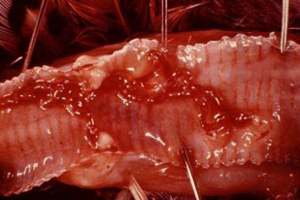Gapeworm a perennial problem for game bird producers

With gapeworm a perennial problem, most producers of game birds are well aware of the need to worm on a routine basis. But sometimes that routine is nowhere near frequent enough.
With gapes one of the biggest threats to game bird rearing, the need to keep on top of gapeworms is a major priority. Unfortunately, gapeworm has the shortest pre-patent period of all the common poultry worms – able to reproduce and cause the bird to eliminate worm eggs in just 18-20 days from the point of infection. That means treating every three weeks to keep worm burdens down in both the birds and their environment, a tougher regime than is even needed in most commercial poultry units.
This year, the problem of parasitic worms may be even more acute: NADIS parasite forecasts have highlighted that rainfall has consistently been running well above average for the last quarter. This means it’s likely that worm eggs in the environment have been protected in mud and not destroyed by desiccation or exposure to sunlight, potentially allowing more infective worm eggs to survive into the spring this year. Being more strategic about worming is an essential, given this raised level of risk.
An infected bird can produce many infectious worm eggs that build up in the environment. After a few years, or months in some instances, the soil can become heavily contaminated, increasing infection pressure. So, if the same rearing pens are used every year and worms are not adequately controlled, then there’s a potential parasite time bomb ticking away.
Source: Elanco Animal Health












